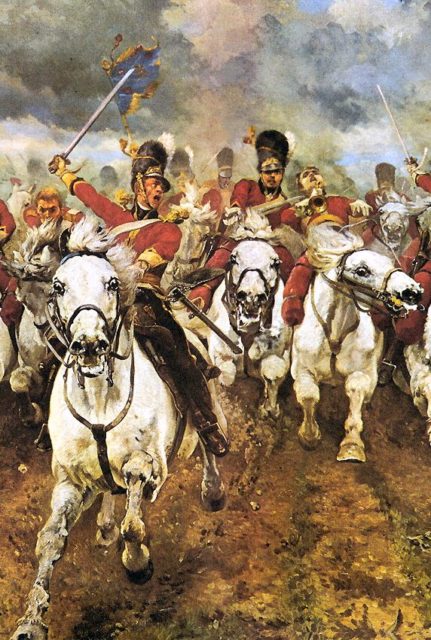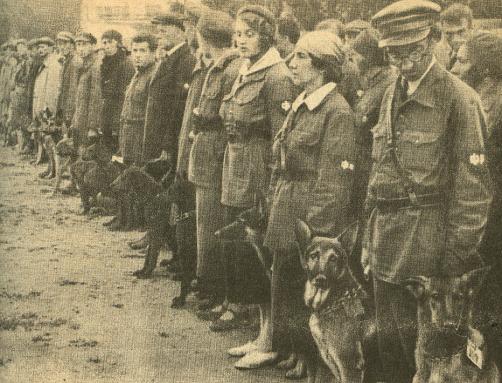Warfare and animals. They go hand in hand, they always have. In a time when we now have high tech vehicles, bombs that can destroy anything and incredibly destructive guns, one thing hasn’t changed: the use of animals as weapons.
Whether camels, dogs, oxen or elephants animals have been used in warfare for a very long time and will continue to be for years to come. Each type of animal is unique. They can be rugged; they can go places vehicles cannot or they can be used as a bomb.
Transportation
Perhaps the most important military animal is the horse. It is certainly the most used and was at one time considered the most prestigious. Horses have been utilized in battle forever and have played a vital role in the world’s wars. At first, horses were used to pull things like chariots and small carriages for infantry. Over time this changed.
The horse was required for other tasks, such as mounted troops who carried anything from a bow (in the early days) to swords and even guns. The horse is a versatile animal, able to cross difficult terrain, making it perfect for wartime use.
Some animals can only be used for transportation. Why? Because they cannot be domesticated. Elephants fall into this category. They can be helpful to an army to get through rugged terrain or hauling equipment; that is all. Recorded use of elephants in war dates back to as early as 1100 B.C., but they were even implemented in recent times, with the Japanese using them during World War II.
Of course, camels have been used in war, mostly in dry areas. They work well where there is sand and were put into service in both World Wars. While some animals are limited in what they can transport, others are not. For instance, mules are not as strong oxen, which can carry substantial loads, but mules can take heavy goods into rougher terrain than, say, a horse. To give an idea of how much oxen can haul, in the past, they have been used to move around artillery.

There have been attempts to make some animals adapt for war. The Swedish and Soviets both tried to make this happen with the moose, which they wanted to use for calvary, much like horses. As the two countries have a lot of snowy territories, the idea made sense. The moose was found not to be suitable for warfare, mainly as they contracted diseases, making the animals sick. They were also scared of the noise that came with gunfire. Soviet forces were able to break them of this habit, although they never really put the moose to work.

Communication
Carrier pigeons are no longer heavily used in war, but at one time they were utilized to deliver messages. They were first used for communications during medieval times and saw regular use in both World Wars. There was even an attempt, during World War II, to create a pigeon-guided bomb. The name of this was Project Pigeon. How exactly does something like this work? The pigeons would sit in front of a screen which would be showing where the bomb was headed. The pigeon (well, this is how it was supposed to work) would then recognize the target and peck in the direction the bomb would then need to travel. If the pigeon spotted the target to the left, the bird would peck left.
The project was discontinued in the 1950s once the technology for guided missiles was shown to be superior.

Weapons
One of the earliest recorded use of animals as weapons was during the Southern Song Dynasty, which ran from the 12th to the 13th century. It was the monkey. The monkeys would be wrapped in straw, doused in oil then set on fire and sent into villages. The frantic animals would run around setting fire to tents, huts, etc.

Dogs were a popular choice for weapon use during much of the 20th century. Typically, dogs were used as an anti-tank weapon by strapping the bombs to them. The process was largely unsuccessful. World War II saw a lot of anti-tank dog use. Most countries had them, with the Soviet Union being the ring leader. They deployed 40,000 dogs in a two-year time span during World War II. The Soviet Union trained dogs for this purpose from World War II until 1996.
The Soviets had a lot of issues with the dogs. They had been trained to attack non-moving tanks, and would not attack moving tanks. Dogs were also scared of the gunfire, making them shy away from the battlefield.
The United States had dogs although they never actually used them for this purpose. In World War II Japan was given over 25,000 dogs by Germany for anti-tank use. In a more modern setting, dogs have also been used by terror groups during the Iraq War.
Of course, other animals have been used to deploy bombs. The United States worked on a project in which they used bats to carry tiny bombs. Transportation animals are often used (to this day). They are loaded and sent on their way, resulting in an explosion.
Other Interesting Uses
- Dolphins and Sea Lions. What do they share in common? Both are utilized by the U.S. military to clear underwater mines and recover items.
- Unsurprisingly, cats have been used to clear rats from ships.
- 43 chickens were to be used to detect poisonous gas during the Gulf War. 41 of them died upon arriving in Kuwait. The codename for this mission was Kuwait Field Chicken.
- During the Spanish Civil War, turkeys were attached to items dropped from planes. These birds cannot fly very far, but they can flap their wings, which acted like a parachute for the supplies. Once on the ground, the packages were safe, and the men had turkey to eat!
